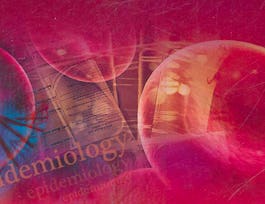生物化学是当今生命科学领域中发展最为迅速、涉及面最广的基础学科之一,其着眼点在于使用化学、物理学和生物学等方法去研究各类生物分子的结构与功能,在分子水平上阐明生命的本质、原理和规律。如今,生物化学的理论和实验技术已渗透到生命科学的方方面面,它的发展一次又一次地带动了整个生命科学的发展。
生物化学可分为结构生物化学、代谢生物化学和分子生物学三个部分。本课程为第一部分,即结构生物化学,以后还会推出代谢生物化学和分子生物学课程。 结构生物化学的内容可以说是生物化学最基础的部分,有人把这一部分的内容说成是“静态生化”。其主要内容是各种生物分子(氨基酸、核苷酸、蛋白质、核酸、酶、碳水化合物、脂类和激素等)的结构、性质与功能,特别是三类生物大分子——蛋白质、核酸和酶的结构、性质与功能。 学完这一部分,将会为你学好生物化学的另外两个部分,即代谢生物化学和分子生物学打下坚实的基础,也为你学好细胞生物学、遗传学等其他生命科学相关课程创造条件。 先修课程:普通生物学和有机化学 大纲(Syllabus) 第一章 蛋白质的结构与功能(Chapter 1 Structure and Function of Proteins) 1. 氨基酸(Amino acids) 2. 蛋白质氨基酸与非蛋白质氨基酸(Proteinogenic AA & non-protenogenic AA) 3. 疏水氨基酸与亲水氨基酸(Hydrophobic & Hydrophilic AAs) 4. 必需氨基酸与非必需氨基酸(Essential & Non-essential AAs) 5. 氨基酸的英文缩写(Abbreviations for 22 amino acids) 6. 氨基酸的缩合反应(AA Condensation reaction) 7. 氨基酸的手性(Chirality of Amino Acids) 8. 氨基酸的两性解离与等电点(Acid & base dissociation of amino acids and pI) 9. 茚三酮反应(Reaction with Ninhydrin) 10. Sanger反应(Reaction with DNFB) 11. Edman反应(Reaction with PITC) 12. 蛋白质(Proteins) 13. 蛋白质的一级结构(Primary Structure of Proteins) 14. 肽键(Peptide bonds) 15. 蛋白质的二级结构(Secondary Structure of Proteins) 16. α螺旋(The Alpha Helix) 17. β折叠(The Beta-Pleated Sheet) 18. β转角(The Beta Turn) 19. β突起(The Beta Bulge) 20. 蛋白质的三级结构(Tertiary structure of Proteins) 21. 疏水键(Hydrophobic interactions) 22. 模体(Motif) 23. 结构域(Domain) 24. 蛋白质的四级结构(Quaternary Structure of Proteins) 25. 蛋白质的折叠(Protein folding) 26. 天然无折叠蛋白(Natively Unfolded Proteins) 27. Anfinsen实验(Anfinsen’s Experiment) 28. 分子伴侣(Molecular Chaperone) 29. 蛋白质二硫化物异构酶(Protein disulfide isomerase,PDI) 30. 脯氨酰肽酰顺反异构酶(Peptidylprolyl cis-trans isomerase,PPI) 31. 朊病毒(Prions) 32. 蛋白质组(Proteome) 33. 蛋白质的功能(Functions of Proteins) 34. 兼职蛋白(Moonlighting Proteins) 35. 蛋白质结构与功能之间的关系(Structure and function relationships of proteins) 36.α角蛋白(Alpha Keratin) 37.β角蛋白(Beta Keratin) 38.胶原蛋白(Collagen) 39.肌红蛋白与血红蛋白(Myoglobin & Hemoglobin) 40.正协同效应(Positive Cooperativity) 41.波尔效应(Bohr Effect) 42.别构效应(Allosteric effect) 43.HbS 44.HbF" 第二章 核酸的结构与功能(Chapter 2 Structure and Function of Nucleic Acids) 1.碱基(Bases) 2.互变异构(Keto-enol tautomerism) 3.核苷(Nucleosides) 4.核苷酸(Nucleotides) 5.核酸(Nucleic Acids) 6.多种多样的RNA(Versatile RNAs) 7.核酸的一级结构(Primary Structure of Nucleic Acids) 8.B-DNA A-DNA 10.Z-DNA 11.几种DNA的非常规的二级结构(Other forms of secondary structure of DNA) 12.RNA二级结构(Secondary structure of RNA) 13.DNA三级结构(Tertiary Structure of DNA) 14.RNA三级结构(Tertiary Structure of RNA) 15.核糖核酸蛋白复合物(RNA-Protein Complex) 16.核小体(Nucleosome) 17.RNA世界(The RNA world hypothesis) 第三章 蛋白质和核酸的性质(Chapter 3 Properties of Proteins and Nucleic Acids) 1. 紫外吸收(UV absorption) 2. 沉淀(Precipitation) 3. 两性解离(Acid & base dissociation and pI) 4. 变性(Denaturation) 5. 复性(Renaturation) 6. Tm 7. 水解(Hydrolysis) 8. 蛋白质的颜色反应(Protein coloring reaction) 9. 电泳(Electrophoresis) 10. 层析(Chromatography) 11. 透析与超滤(Dialysis and Ultrafiltration) 第四章 酶的结构与功能(Chapter 4 Structure and Function of Enzymes) 1. 酶(Enzymes) 2. 辅助因子(Cofactors) 3. 核酶(Ribozymes) 4. 活性中心(The Active Site) 5. “锁与钥匙”模型(Lock and key model) 6. “诱导契合”模型(The Induced Fit model) 7. “三点附着”模型(Three-point attachment model) 8. 酶的命名和分类(Enzyme Nomenclature) 9. 酶动力学(Enzyme kinetics) 10. 米氏方程(The Mechaelis-Menten Equation) 11. Kcat和kcat/Km(Kcat & kcat/Km) 12. 双倒数作图(Double-reciprocal plot) 13. 酶抑制剂(Enzyme Inhibitors) 14. 竞争性抑制剂(Competitive Inhibitor) 15. 非竞争性抑制剂(Non-competitive Inhibitor) 16. 反竞争性抑制剂(Uncompetitive Inhibitor) 17. 基团特异性抑制剂(Group Specific Reagent) 18. 底物类似物(Substrate Analogue) 19. 自杀性抑制剂(Suicide Inhibitor) 20. 别构酶(Allosteric Enzymes) 21. 齐变模型(The Concerted Model) 22. 序变模型(The Sequential Model) 23. 过渡态稳定学说(“The transition-state stabilization” theory) 24. 抗体酶(Abzymes) 25. 临近与定向效应(Catalysis by proximity and orientation) 26. 广义酸碱催化(General Acid-base catalysis) 27. 静电催化(Electrostatic catalysis) 28. 金属催化(Metal catalysis) 29. 共价催化(Covalent catalysis) 30. 底物形变(Substrate strain) 31. 蛋白酶(Proteases) 32. 酶活性的调节(Regulation of Enzyme Activities) 33. 同工酶(Isozymes) 34. 别构调节(Allosteric control) 35. 共价修饰调节(Regulation by covalent modification) 36. 水解激活(Proteolytic activation) 37. 调节蛋白的激活和抑制(Stimulation and inhibition by control proteins) 38. 维生素(Vitamins) 第五章 糖类和脂类的结构与功能(Chapter 5 Structure and Function of Carbohydrates and Lipids) 1. 碳水化合物(Carbohydrates) 2. 单糖(Monosaccharides) 3. 差向异构体(Epimers) 4. 异头体(Anomer) 5. 寡糖(Oligosaccharides) 6. 多糖(Polysaccharides) 7. 糖缀化合物(Glycoconjugates) 8. 脂类(Lipids) 9. 脂肪酸(Fatty acids) 10. 脂肪(Fats) 11. 反式脂肪(Trans Fats) 12. 磷脂(Phospholipids) 13. 胆固醇(Cholesterol) 14. 脂双层(Lipid Bilayers) 第六章 激素的结构与功能(Chapter 6 Structure and Function of Hormones) 1. 激素(Hormones) 2. 放射免疫测定(Radioimmnoessay) 3. 受体(Receptors) 4. 第二信使(Second messengers) 5. G蛋白(G-proteins) 6. 蛋白质激酶(Protein kinases) 7. 通过胞内受体的激素作用机制(Mechanism of Hormone action by intracellular receptors) 8. PKA系统(The PKA system) 9. PKC系统(The PKC system) 10. PKG系统(The PKG system) 11. NO系统(Nitric oxide system) 12. 受体酪氨酸激酶系统(The RTK System) 13. 视觉产生相关的信号转导(Visual Signal Transduction) 14. 嗅觉产生相关的信号转导(Olfactory Signal Transduction) 15. 信号系统的终止(Termination of the signal)




 enthalten
enthalten













